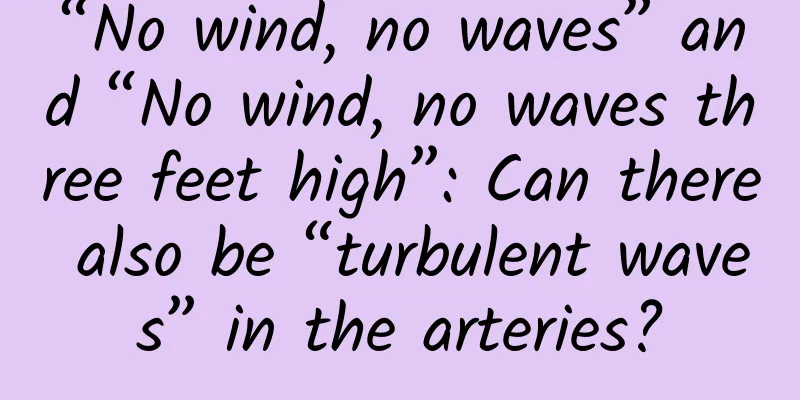From "tears of wine" to the magical "surface tension"

|
Grape wine and luminous cup, The pipa music urges me to drink. Don't laugh at me lying drunk on the battlefield. How many men have returned from wars throughout history? This is "Liangzhou Ci" by Wang Han, a frontier poet of the Tang Dynasty. The opening line fully displays the petty-bourgeois sentiment of extravagance and luxury. It is already intoxicating even without the wine! Who cares about the heroic and tragic feelings expressed by the heroes and soldiers later. Let’s put aside the poetic and picturesque details and just talk about the “tears of wine”. 1. What are “tears of wine”? When drinking wine, it is generally advisable to pour 1/3 of the capacity of the glass. The purpose is, on the one hand, to facilitate shaking the glass, so that the wine can fully contact oxygen, slowly wake up, release the rich aroma, and taste more mellow; on the other hand, it is to better observe the color of the wine, judge the year and variety of the wine, and on the other hand, it is more convenient to observe the "tears of wine". When we gently shake the wine glass, the wine swirls in the glass, and then forms columns of liquid on the wall of the glass, slowly sliding down along the wall of the glass, leaving traces of wine on the wall of the glass; thin and long, like the slender legs of a beautiful woman, and like the tears on Lin Daiyu's cheeks. These columns of wine are the legendary "wine tears", "wine legs", "wine feet" or "cup hanging". The romantic French call it "wine tears" (Figure 1) - very charming and romantic. Figure 1 “Tears of Wine” The luminous cup of grape wine in "Liangzhou Ci" will naturally shed "wine tears". Are these "wine tears" moved by the tragic heroism of the Western Regions, or are they heartbroken because they can't help? Or who dripped sad tears into the wine? Why does wine have "tears"? Before answering this question, let's learn some basic knowledge. 2. What is “surface tension”? Surface tension is the tendency of a stationary liquid surface to contract to the smallest possible surface area. The definition is very rigorous, but the technical terminology is difficult to understand. Let me explain it in Mandarin. There is mutual attraction between adjacent molecules in a liquid. Inside the liquid, the liquid molecules are acted upon by the surrounding adjacent liquid molecules. These forces are evenly distributed in all directions of the molecules, so their combined force is zero (Figure 2). Figure 2 Mechanism of surface forces On the surface of a liquid (the liquid film shown in Figure 2), the situation is different. The liquid molecules here are not subjected to uniform forces in all directions around them, but the combined force is directed toward the inside of the liquid; under the action of this combined force, these liquid molecules are like being pulled inward. This will generate internal pressure in the liquid and force the liquid surface to have a tendency to shrink inward to the minimum area. At the same time, due to the mutual attraction between liquid molecules on the surface of the liquid film, there is also tension "parallel" to the surface in the tangent direction of the liquid film, which is called surface tension. The net effect is that the liquid behaves as if its surface is covered by a stretched elastic membrane. It can be seen that surface tension occurs because the attraction between molecules at the microscopic level is unbalanced; they pull on each other, which manifests as surface tension. 3. What is the “Marangoni effect”? The Marangoni effect refers to the phenomenon of mass transfer due to the surface tension gradient at the interface of two liquids with different surface tensions. I will continue to explain in Mandarin. When two liquids come into contact, the liquid with a larger surface tension exerts a stronger pull on the liquid with a smaller surface tension around it, creating a surface tension gradient (i.e., tension difference), which causes the liquid to flow from the direction of lower surface tension to the direction of higher tension (Figure 3). This is like a tug-of-war between two opponents, where the stronger one will naturally pull the weaker one to its side. Figure 3 Schematic diagram of the Marangoni effect Similarly, the surface tension of the same solution will increase due to its high concentration. Therefore, if solutions of different concentrations are put together, the Marangoni effect will also occur, and the dilute solution will penetrate and flow into the concentrated solution. This phenomenon was discovered by British physicist James Thomson in 1855. However, Italian physicist Carlo Marangoni studied this phenomenon as his doctoral thesis at the University of Pavia and published the results in 1865. Since then, this phenomenon has been collectively called the Marangoni effect. 4. How do “tears of wine” come about? "Tears of wine" are caused by the Marangoni effect of wine. The formation of "wine tears" is related to alcohol. Here we must first explain two points. First, the surface tension of alcohol is smaller than that of water. Second, alcohol is highly volatile. Water molecules are composed of hydrogen atoms and oxygen atoms. Oxygen atoms are easily attracted to the positively charged hydrogen nuclei, and this force is called "hydrogen bonding". Hydrogen bonding is much stronger than the general intermolecular force. In contrast, the binding force between alcohol (scientific name "ethanol") molecules is much weaker. Due to the existence of strong hydrogen bonds, water has extremely strong surface tension. The surface tension of alcohol is much smaller than that of water, and alcohol is very easy to evaporate. When you shake a wine glass, the wine will rise inside the glass. This increases the contact area between the wine and the air. This makes the alcohol more volatile. Generally speaking, alcohol evaporates fastest at the thinnest part at the top. This means that the alcohol concentration at the top is lower than that at other parts of the wine, so the surface tension at the top is greater. This difference in surface tension on the glass wall pulls the wine "from bottom to top" for balance. Driven by the continuous evaporation of alcohol, the liquid continues to flow upward. However, after being pulled up, the wine has nowhere to go and can only gather on the glass wall, accumulating to form an arched droplet until the surface tension is not enough to resist the gravity of the droplet and it "sheds tears" reluctantly (Figure 4). This is the formation principle of "wine tears". Figure 4 The formation principle of “wine tears” Therefore, the "tears of wine" is actually a "Romance of the Three Kingdoms" story of alcohol, water and air, or it can be said to be a tug-of-war between surface tension and gravity. The phrase "wine's tears" is just a way of giving wine more human emotions. Wine obviously does not have the ability to shed tears. The phrase "wine legs" is just a fantasy of those who like to drink and have sex. Wine obviously does not have the ability to grow legs. Student "Cheng Yang" does not need to sigh: "Fine wine clings to the glass" - is it the wine's sorrow of parting, or the glass's reluctance to stay? In fact, wines with high alcohol content have beautiful "wine tears" and "wine legs". Without intervention, whether it is red wine or white wine, as long as it is a high alcohol wine, it will shed "wine tears" and grow "wine legs". However, through simple manual intervention, "tears of wine" and "wine legs" will not appear - after pouring the wine, just quickly cover the wine glass completely to prevent the alcohol from evaporating, and then shake the wine glass, and the "tears of wine" and "wine legs" phenomenon will disappear. Here’s a homework assignment: Is the quality of wine related to “wine’s tears”? 5. What is the use of the magical "Marangoni effect"? Many directional transmission processes in nature are derived from the Marangoni effect. Now, many people have used the Marangoni effect to do a lot of things in various engineering practices. Here are a few examples to spark your interest. (1) Why can’t you urinate in boiling water? Legend has it that if a person urinates into hot water, the water will flow upstream and the person urinating will end up getting scalded. Many people have conducted experiments on this issue. The results are the same as the legend. The hot water does flow upstream along the lower temperature water and scald the penis (Figure 5). Because, according to the Maracas effect, the surface tension is also related to the temperature, and the hot water will flow upstream! Figure 5: Peeing in hot water can still cause burns even if you stand high and pee far away. (2) Why do experts often call on people to clean their toilets? A toilet that looks clean often contains various bacteria or other things that are invisible to the naked eye. If the toilet is not clean and people urinate in it, bacteria will flow upstream along with the urine and cause urinary tract infection. (3) Application in metallurgy, chemical industry and other fields For example, in the metallurgical industry, due to the difference in surface tension after different metals melt, the Marangoni effect will cause the liquid metal to migrate, resulting in uneven distribution of different metals. The seemingly unrelated wine and metallurgical industries are linked together by the same physical phenomenon! (4) Seawater desalination technology There is a salt concentration gradient at the interface between seawater and air, which generates a surface tension gradient, which provides an additional driving force for the movement of solvents and salt solutes. The surface tension gradient along the interface generates a tangential force, forming a slip velocity, driving the seawater to flow from low surface tension to high surface tension (Figure 6). Figure 6 Working principle of the “Marangoni effect” of seawater desalination technology (5) The Marangoni effect drives liquid spreading and its generated pattern, as well as Marangoni convection in the solution below the liquid surface. A research team led by Professor Shum Ho-cheung of the Department of Mechanical Engineering at the University of Hong Kong, together with the research team of Professor Neil Ribe of Paris-Saclay University in France, published their research paper in Nature Communications: Generation of Fermat's spiral patterns by solutal Marangoni-driven coiling in an aqueous two-phase system, [2023-12-17].DOI:10.1038/s41467-022-34368-5. The paper reported their breakthrough in fluid mechanics, developing a three-dimensional Marangoni material transfer system in a two-phase aqueous system (Figure 7). Materials can be transferred from droplets to the liquid surface in a regular manner and spread in an orderly manner, providing new ideas for the development of innovative automatic spinning systems. Figure 7 Marangoni effect-driven liquid spreading and its generated pattern, as well as Marangoni convection in the solution below the liquid surface (6) Marangoni effect in hemodialysis In medicine, someone has invented a system using the Marangoni effect to assist hemodialysis (Figure 8). Using this method, people can achieve hemodialysis more efficiently. Figure 8 Marangoni effect in hemodialysis Hemodialysis is one of the renal replacement therapies for patients with acute and chronic renal failure. Blood is drained from the body to the outside of the body and passed through a dialyzer composed of countless hollow fibers. The blood and an electrolyte solution (dialysate) containing a concentration similar to that of the body are dialyzed inside and outside the hollow fibers through a semipermeable membrane. Through the principles of diffusion, ultrafiltration, adsorption and convection, substances are exchanged to remove metabolic waste from the body, maintain electrolyte and acid-base balance, remove excess water from the body, and return the purified blood. The entire process is called hemodialysis. The main principle of hemodialysis is: diffusion + convection. So how to achieve uniform spreading and convection diffusion of blood and electrolyte solution is a key scientific and technological issue. The "Marangoni effect" plays an important role in this. Finally, let’s make a brief summary: surface tension > Marangoni effect > tears of wine > engineering application of Marangoni effect. Following this main line, from “tears of wine” to the magical “surface tension”, we have realized how interesting basic scientific problems are hidden behind many seemingly ordinary phenomena; if we understand and master these scientific problems, we can apply what we have learned to create and change the natural world. |
>>: After wading through water after rain, beware of these skin diseases
Recommend
Teach you step by step how to quickly analyze keyword reports?
In daily life, bidders are often jokingly called ...
From amazing to declining: Two years of Google Glass
Apart from Google Glass, there may be no other cu...
Weekly crooked review: BAT Three Kingdoms chaos, you need me as Zhuge Liang
As the saying goes, the world will eventually uni...
Turtle Class Tik Tok Becomes Real Combat Training Camp 2
With the arrival of March, our Turtle Class Tik T...
I want to develop an APP, what should I do if I don’t have a backend?
[[155146]] What should I do if I just started a b...
Bad bacteria are causing trouble for medical treatment? Stop them with antibacterial coating!
In order to thoroughly implement the "Outlin...
183 days! Tracing the flight footprints of the Shenzhou 14 crew
At 20:09 on December 4, 2022, the return capsule ...
A developer's guide to optimizing mobile app performance
【51CTO.com Quick Translation】 Nowadays, with the ...
The Super Time and Space Detective invites you to solve the case and solve the dinosaur "mystery" together
Produced by: Science Popularization China Author:...
Brand promotion: 15 tips for writing a good advertising proposal...
Writing an advertising proposal is essentially a ...
What should you do to plan an event that will go viral on WeChat Moments?
How to create an event that will go viral on WeCh...
Jupiter and the Moon are coming again! Are you ready? Don’t miss it this time
March 15, 2024: Mercury, bright Jupiter, and the ...
Layoffs, unpaid wages, and property sales: LeEco's US strategy is now in tatters
In 2016, China's star tech company LeEco made...
What are the functions of the Lanzhou Nail Salon WeChat Mini Program? How to make a manicure appointment app?
The love of beauty has existed since ancient times...
Xiaomi 3 configuration top-level appearance mediocre leather case slightly lower-end 16GB version 1999 yuan
[September 9 news] If the hardware configuration ...


![[Creative Cultivation Program] One cockroach can reproduce 10 million? Why are cockroaches so fertile?](/upload/images/67f247b9136d4.webp)






